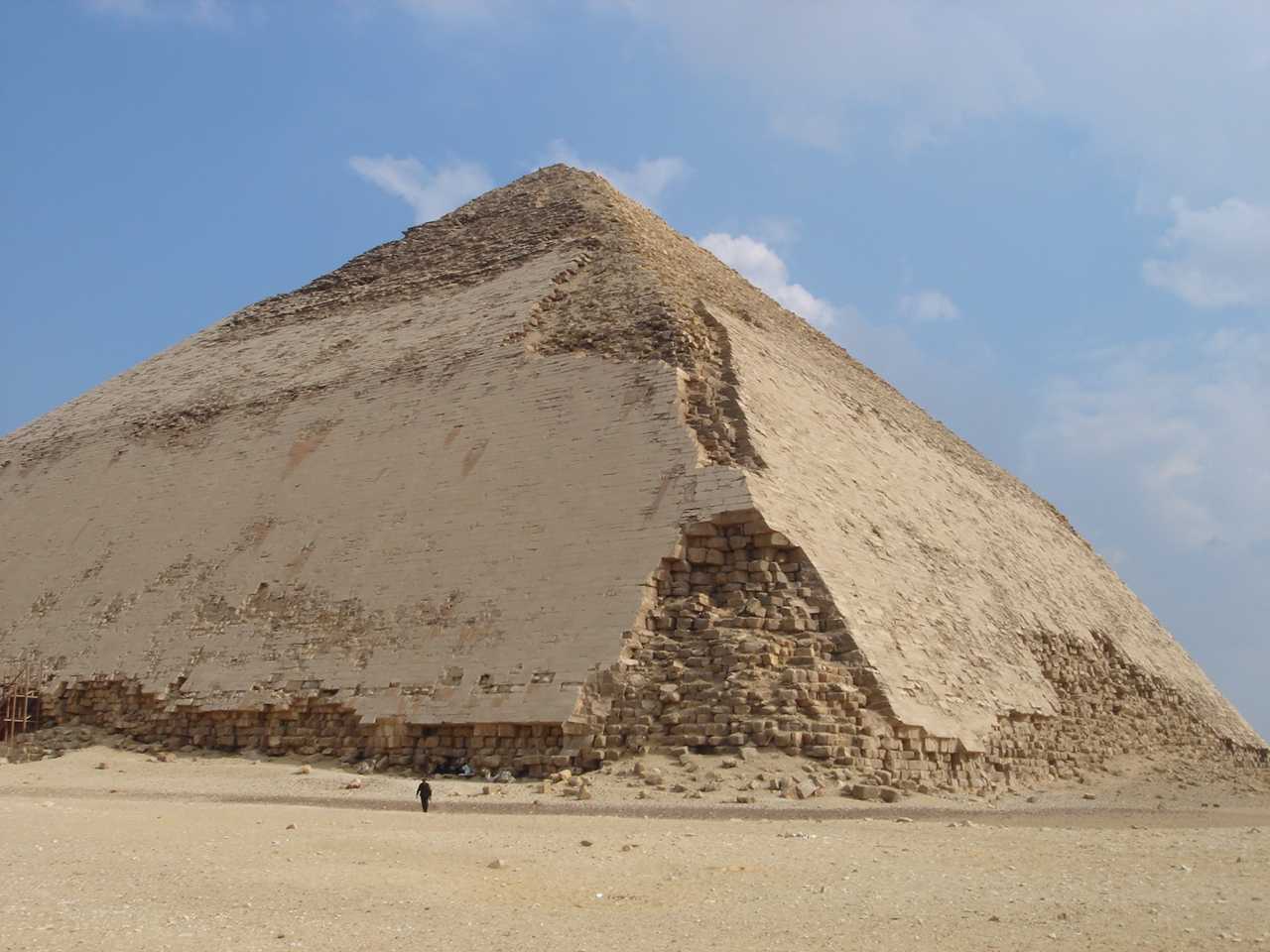Exploring the Mysteries of the Bent Pyramid
Introduction to the Bent Pyramid
The Bent Pyramid, located in the Dahshur necropolis near Cairo, Egypt, stands as a captivating testament to ancient Egyptian architectural ingenuity. Built during the reign of Pharaoh Sneferu, the pyramid’s unique design distinguishes it from other structures of its time. The Bent Pyramid holds a significant place in the evolution of pyramid construction, offering a glimpse into the experimentation and learning process of ancient Egyptian builders.
Get your dose of History via Email
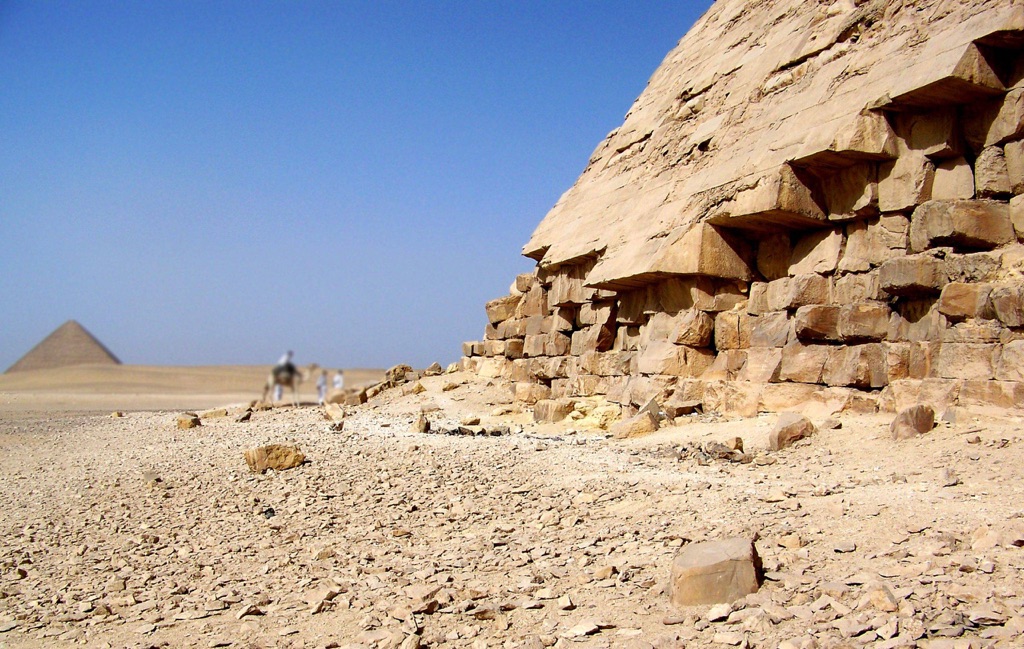
Architectural Uniqueness
The Bent Pyramid is distinguished by its unusual shape—a transition from a steep angle at the base to a shallower angle near the top. This distinctive design is believed to be a result of adjustments made during construction to avoid structural instability. The pyramid’s original steep angle had raised concerns, leading to a modification midway through its construction. Despite these adjustments, the Bent Pyramid is a marvel of precision and architectural achievement, showcasing the craftsmanship of ancient Egyptian builders.
Construction Techniques and Materials
The construction of the Bent Pyramid involved the use of limestone and granite blocks, showcasing the mastery of ancient Egyptian builders in working with diverse materials. The inner structure is composed of limestone, while the outer casing, now mostly eroded, was made of fine Tura limestone. The techniques employed in shaping and assembling these massive stones highlight the advanced engineering capabilities of the ancient Egyptians.

Historical Significance and Purpose
Constructed during the 26th century BCE, the Bent Pyramid is associated with Pharaoh Sneferu, who played a crucial role in the development of pyramid-building techniques. The pyramid is believed to have served as Sneferu’s final resting place, symbolizing his legacy and the culmination of architectural experimentation during his reign. The Bent Pyramid is part of the Dahshur necropolis, a sacred burial ground that includes other pyramids and tombs.
Preservation Efforts and Ongoing Research
Preservation Challenges
The Bent Pyramid, like many ancient structures, faces preservation challenges due to natural erosion, environmental factors, and the passage of time. Efforts are underway to mitigate the impact of these challenges and ensure the long-term survival of this architectural wonder. Conservation projects focus on stabilizing the structure and protecting it from further deterioration caused by weathering and human activities.
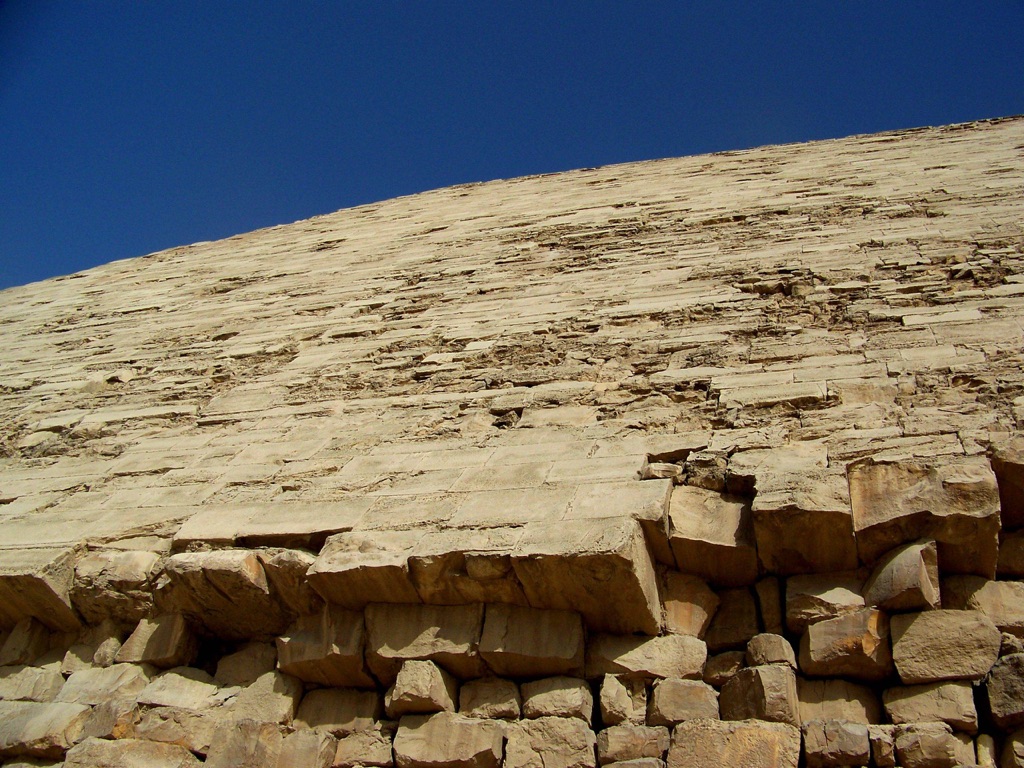
Ongoing Research and Discoveries
Modern archaeological and scientific methods continue to unveil secrets hidden within the Bent Pyramid. Non-invasive technologies such as ground-penetrating radar and 3D scanning have been employed to explore the internal structure without causing damage. Ongoing research aims to unravel more details about the construction process, the purpose of specific features, and the historical context of the Bent Pyramid within ancient Egyptian society.
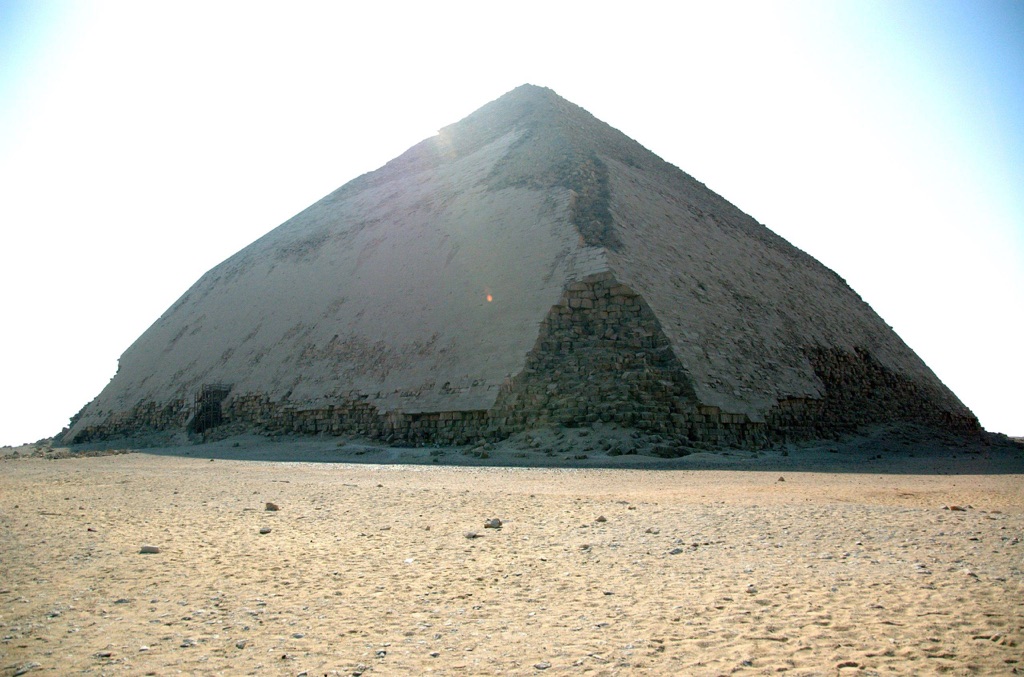
Conclusion and Sources
In conclusion, the Bent Pyramid stands as a captivating symbol of ancient Egyptian architectural experimentation and innovation. Its unique design and historical significance make it a focal point for researchers, historians, and enthusiasts eager to understand the evolution of pyramid construction in ancient Egypt. As preservation efforts and research initiatives continue, the Bent Pyramid will likely reveal more about the mysteries of its construction and the cultural context of its time.
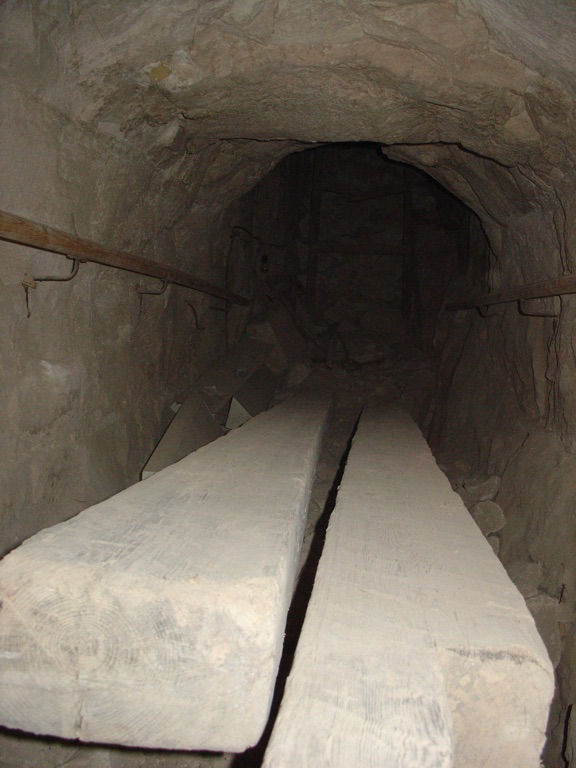
For further reading and to validate the information presented in this article, the following sources are recommended:
Or you can check any of these reputable archaeological and historical texts:
Lehner, M. (1997). The Complete Pyramids: Solving the Ancient Mysteries. London: Thames & Hudson.
Arnold, D. (1991). Building the Pyramids of Egypt…a Detailed Step by Step Guide. McFarland & Company.
Hawass, Z. (2010). The Secrets of the Sphinx: Restoration Past and Present. American University in Cairo Press.
Smith, C. (2017). The Bent Pyramid of Sneferu: A Case of Evolutionary Engineering? In Engineering the Pyramids of Egypt…a Detailed Step by Step Guide, edited by R. B. Partridge, 121–145. Springer.

